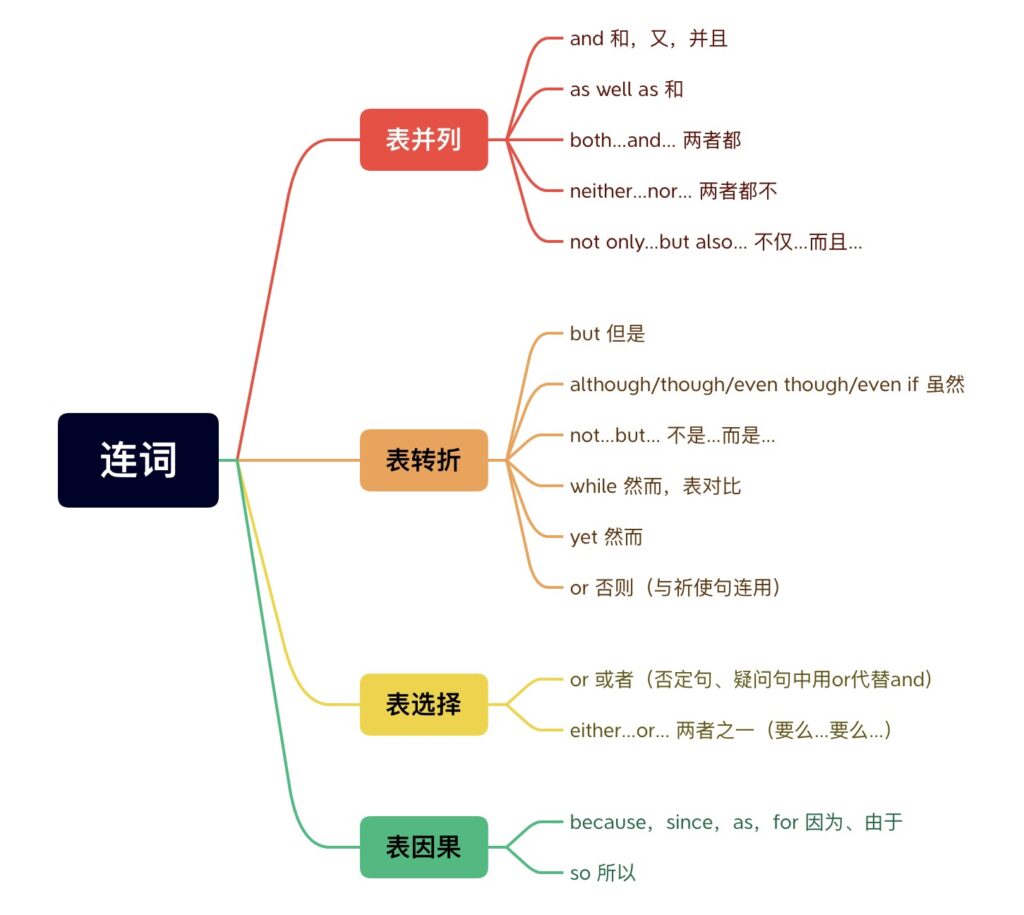
并列连词-and, or, but, so

基本定义 and, or, but和so是英语中常用的连词。它们用来连接词、短语、句子和段落,使其更加连贯,并且起到一个表示关系的作用。下面分别介绍它们的用法: 1. and: 表示并列关系,连接相似的词、短语、句子或者段落。 例句:I went to the store and bought some bread and milk.(我去了商店,…
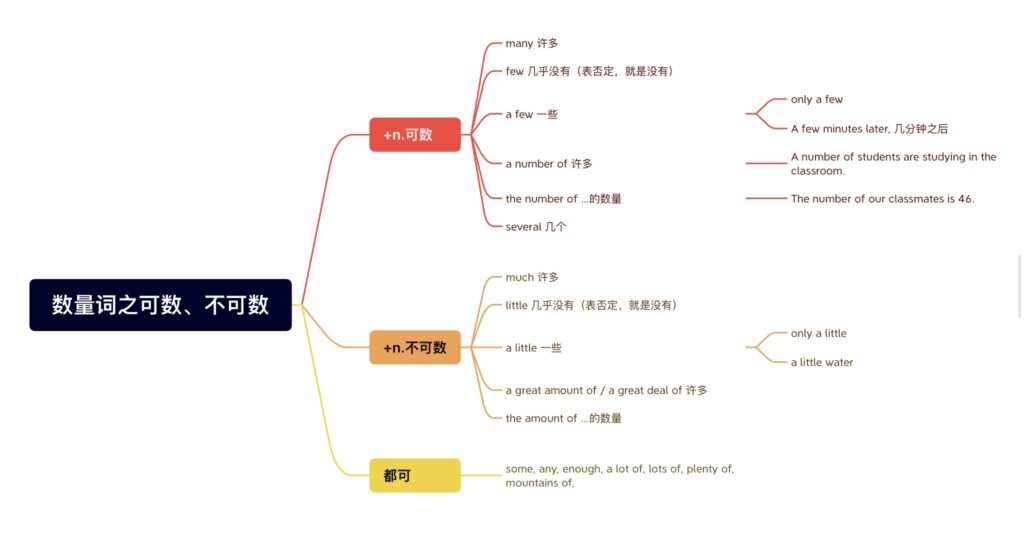
数量词之修饰[C]n.还是[UC]n.?

数量词作为一个重要的英语语法结构,常用于修饰名词的数量和大小。根据其修饰的名词类型的不同,数量词可以分为三类:修饰可数名词的数量词、修饰不可数名词的数量词、以及既可以修饰可数名词也可以修饰不可数名词的数量词。 只可以修饰可数名词 这些数量词只能用于修饰可数名词,如one, two, three, hundred, thousand, many, a…
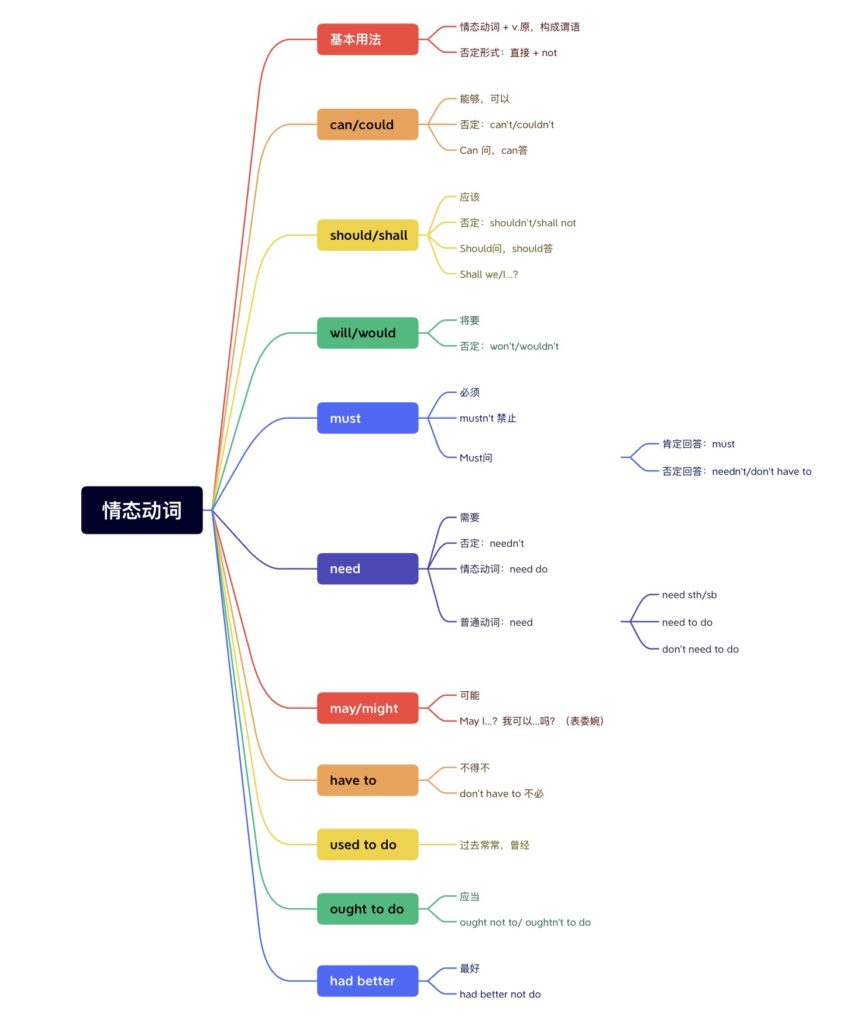
情态动词 Modal Verbs

定义 情态动词是指用来表达说话者观点、态度、意愿、推测等语气的动词,如 can、could、may、might、must、shall、should、will、would。它们的基本特点是:没有人称和数的变化,没有现在分词和过去分词形式,后面跟动词原形构成谓语。 基本用法 表示能力:can/could例如:I can swim. (我会游泳。) I …
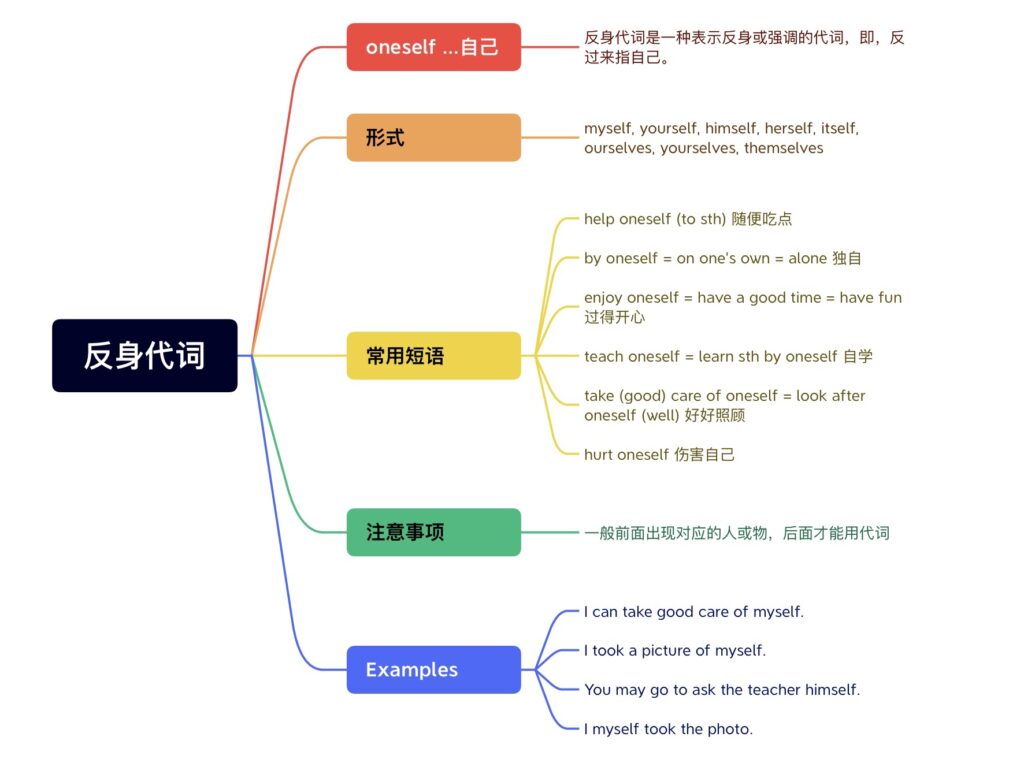
反身代词 Reflexive Pronouns

定义 反身代词是指在句子中指代动作的主体(主语)对其本身进行动作或者反射的代词。英语中的反身代词包括myself、yourself、himself、herself、itself、ourselves、yourselves、themselves。 基本用法 强调主语反身代词可以用来强调句子的主语,通常用于口语和书面语中,用于强调某人是做了某事的主体。例…
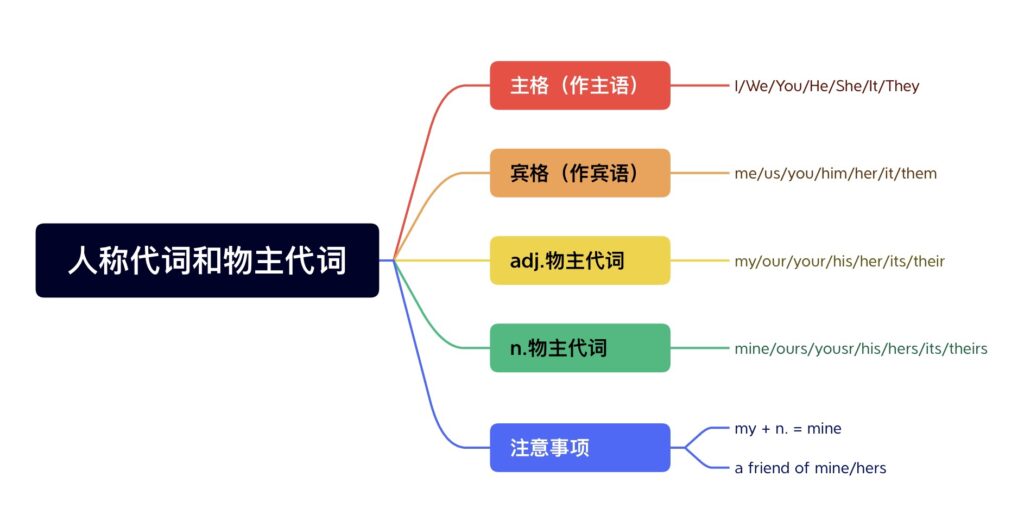
人称代词和物主代词

人称代词和物主代词是英语语法中的基本元素之一,它们用于代替人或物,可以简化表达并使语言更为流畅。在英语中,一般有三种人称代词:主格、宾格和所有格。 人称代词:用于代替人或物 主格代词:用于作主语或表语。 主格代词包括I(我)、you(你)、he(他)、she(她)、it(它)、we(我们)和they(他们)。 宾格代词:用于作宾语。 常用的宾格代词…
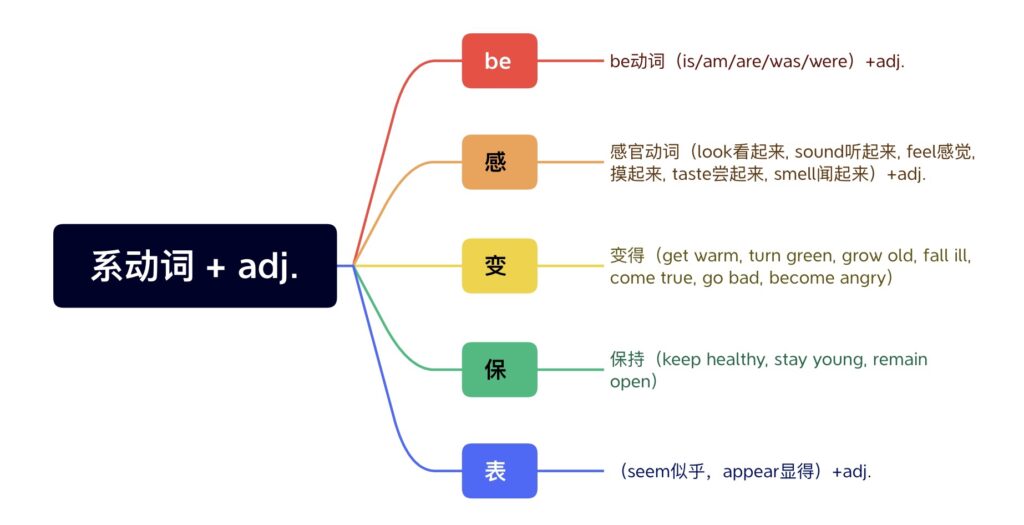
adj.形容词的位置-名词前、系动词后

定义 形容词是用来描述或修饰名词或代词的词语。在英语中,形容词通常出现在名词的前面,但也有一些例外情况。此外,形容词还可以根据不同的分类方式进行分类,下面我来详细介绍一下。 形容词的位置-名词前 一般情况下,形容词放在名词前面,用于修饰名词。例如 A beautiful flower.(一朵美丽的花。)The big house.(那幢大房子。)A…
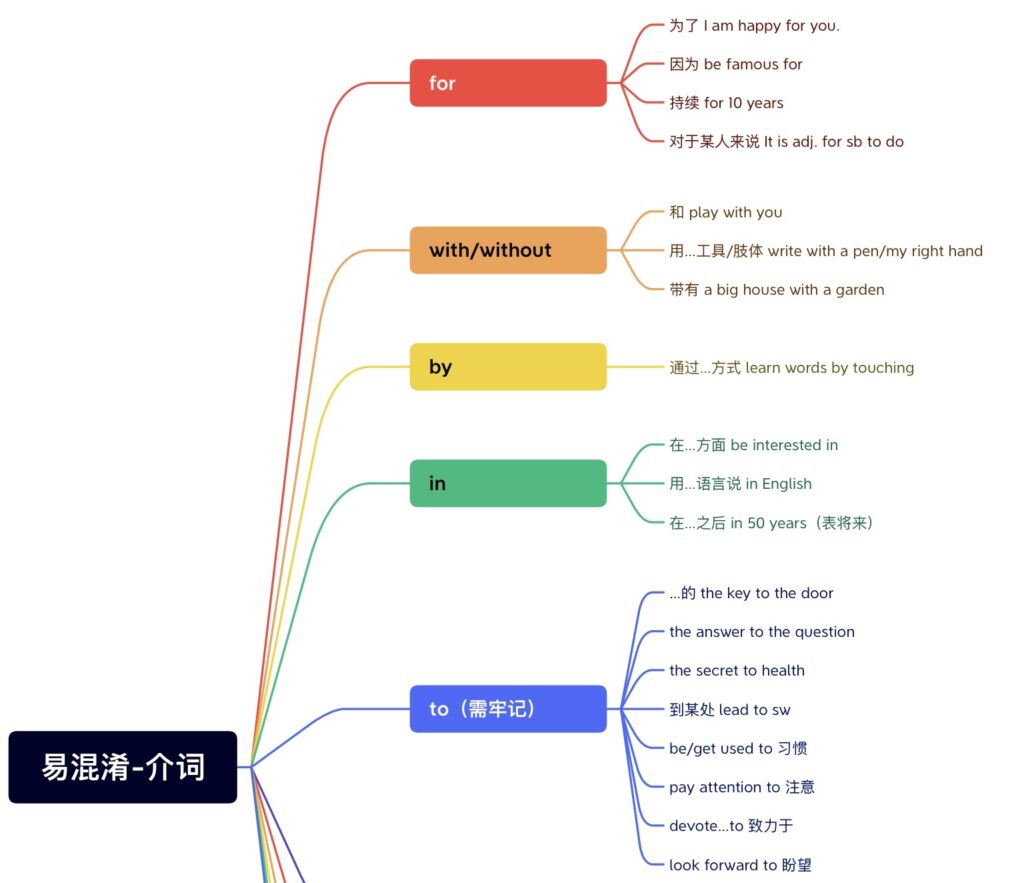
介词-for, with, between, among, as, from, by…?

当我们在学习英语时,介词是一个非常重要的词类。介词可以帮助我们更准确地描述名词与其他单词之间的关系,进而更清晰地表达我们的意思。 介词的分类 时间介词时间介词用于表示时间。以下是一些常见的时间介词及其用法: at:表示具体的时间点,如at 8 o'clock(在8点钟),at noon(在中午)in:表示较为具体的时间段,如in May(在五月),…
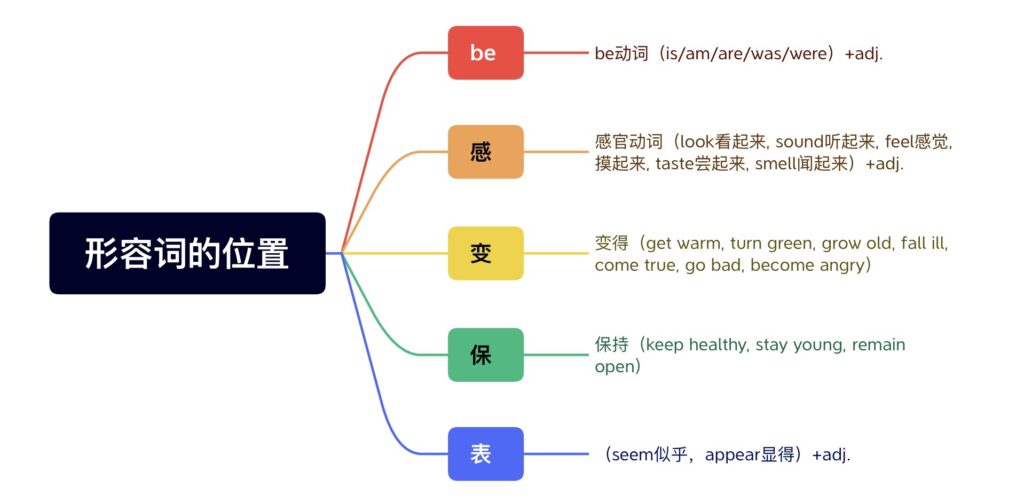
形容词adj.和副词adv.

形容词adj.的定义 形容词是一种词性,用于描述名词或代词的特征和特性。形容词通常用于在句子中修饰名词或代词,并且通常放在名词或代词的前面。例如: The red car A beautiful day My favorite movie 在上面的例子中,"red"、"beautiful"和"favorite"都是形容词,用于描述名词"car"、"…
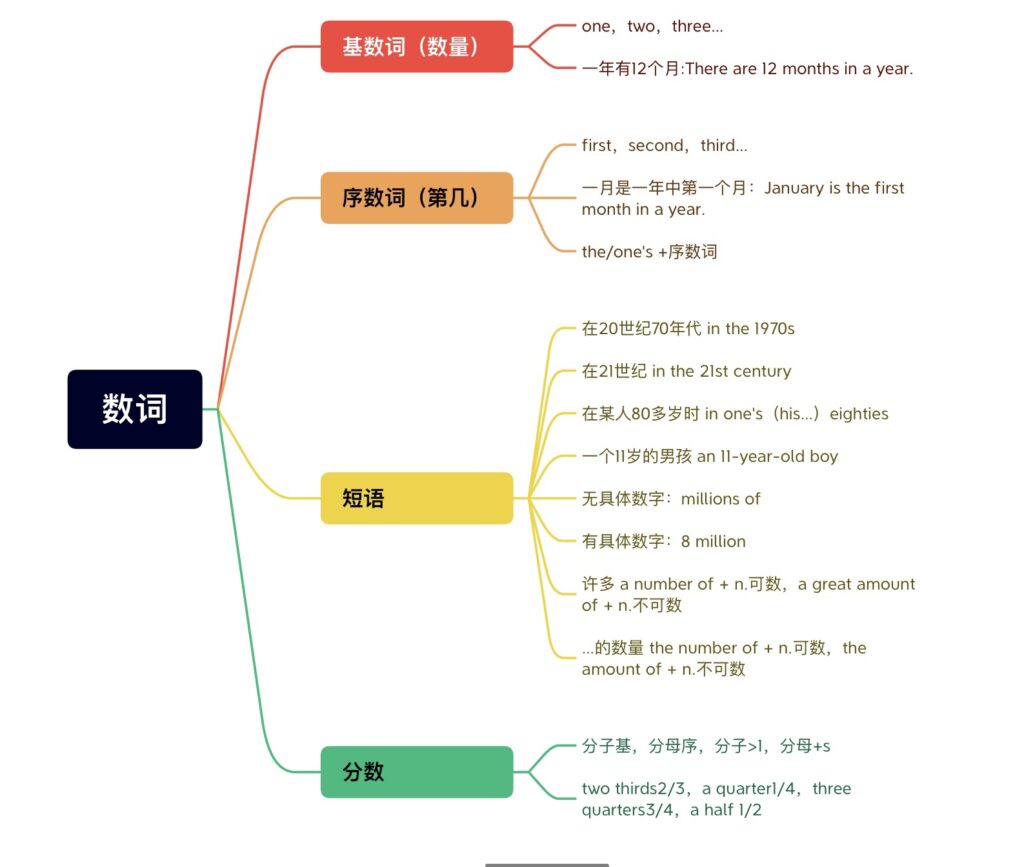
数词Numerals-基数词、序数词、具数与概数?

无论哪种语言,数词的表达都是很基础的,必须要知道一些常用的数词表达。 定义 英语中数词(numerals)是表示数量的词语。数词分为基数词(cardinal numbers)和序数词(ordinal numbers),其中基数词表示具体的数量,而序数词则表示该数量的顺序。 以下是数词的分类和基本用法: 基数词 基数词包括0、1、2、3、4、5、6、…
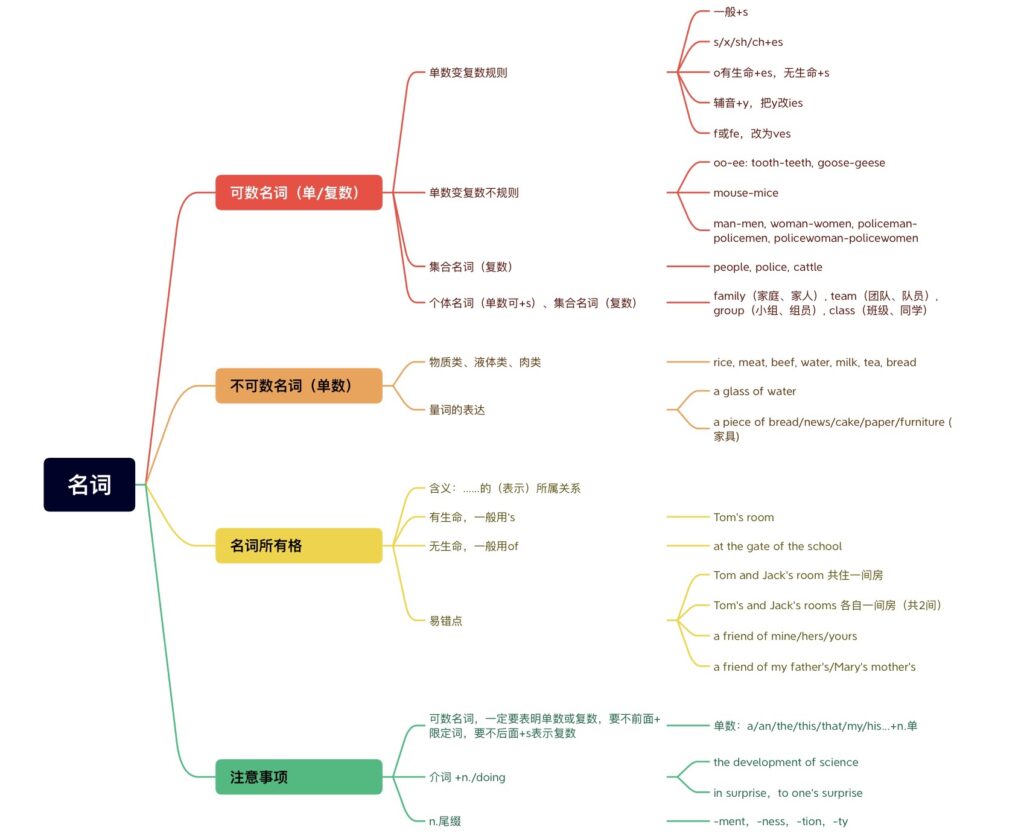
名词noun-可数不可数,傻傻分不清楚?
定义和用法 周边所见之事物,或甚至肉眼不可以见之物,也可用名词表达。名词是英语中的一类词汇,通常用来指称人、事物、想法和抽象概念。下面是一些有关英语名词的基本定义、分类和用法: 名词的定义: 名词是一种词汇,用来代表人、地点、物品、概念等。名词可以用单数形式表示一个事物,也可以用复数形式表示多个事物。 名词的分类: 普通名词:用于指代一般事物,如“…